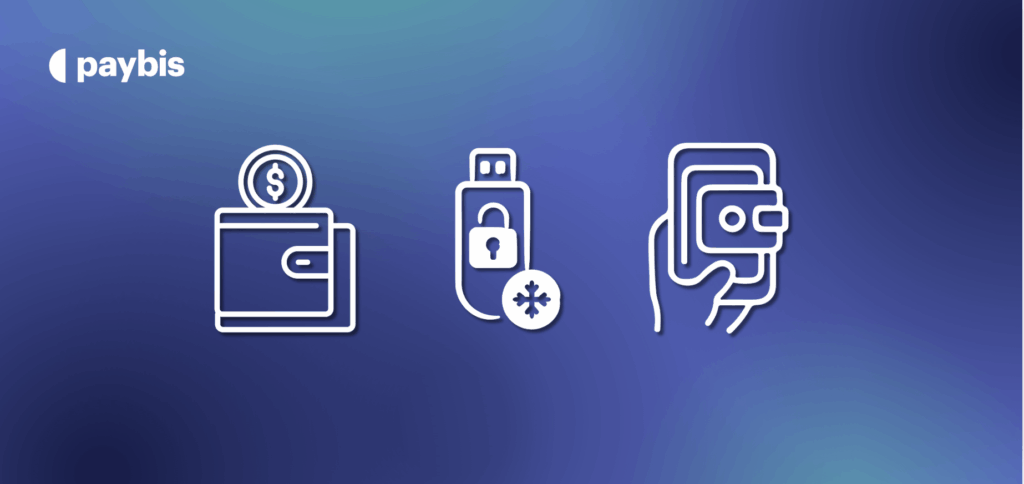PoW vs PoS: Blockchain Consensus Mechanisms Explained
We have previously explained how PoW and PoS work. After a while, however, we decided to write a more in-depth article about these consensus mechanisms. What are their main differences? Which one is better? This rather technical PoW vs PoS analysis will give you all the answers.
A critical aspect of blockchain technology is the distributed ledger, which stores records of all previous transactions. The reason why it is referred to as a distributed ledger is that the information is not stored in a central location but across a network of computers (nodes) in different parts of the world.
For the ledger to operate effectively, all nodes on the network must agree with its contents. This is where the blockchain consensus mechanism comes into play.
The primary purpose of a consensus mechanism is to verify that any information added to the ledger is valid i.e., the entire network is in agreement. This ensures the next block being added to the network represents the most current transactions hence eliminating the possibility of double-spending coins.
The most popular blockchain consensus mechanisms are Proof-of-Work (PoW) and Proof-of-Stake (PoS) protocols. The primary difference between these systems is how they delegate and reward the verification of transactions. Let’s first dive a little deeper into why consensus algorithms before addressing our PoW vs PoS debate.
Table of contents
Why Are Consensus Algorithms Essential in Blockchain Technology?
Since blockchain technology uses a highly decentralized network architecture, the system is self-regulated. This means that anyone can join the network as a node and every node on the network is a server. All nodes have equal “rights”, and they all work collectively in verifying and validating transactions in real-time.
So, how are decisions made in such a distributed network? This is the point at which we start to see the importance of consensus mechanisms.
The goal of a consensus algorithm in the blockchain is to help achieve a unified agreement. Unlike centralized systems that require nodes to trust the server, users in a blockchain system don’t have to trust anyone.
Instead, the consensus protocols ensure that the public ledger (blockchain) is always updated in real-time for anyone to see.
Consensus mechanism key features
Other than that, a consensus mechanism also does the following:
- Prevents double spending: Consensus mechanisms work on the basis of simple algorithms that ensure only valid and verified transactions are included in the public ledger. This helps in solving the traditional problem of spending a digital currency twice, commonly referred to as double-spending.
- Enforces fault-tolerance: Another critical aspect of a consensus mechanism is that it ensures the blockchain is reliable. This ensures the blockchain keeps on running efficiently, even when there is a case of attempted cyber attacks, threats, or unforeseen failures.
- Ensures fairness and equitability: A critical advantage of the decentralized nature of blockchain technology is distributive empowerment where anyone can be a participant on the network.
In fact, the open-source nature of public blockchains makes it easier for anyone to inspect and verify the underlying source code to decide if it is fair to every participant in the network. You can easily set up a node on the network and become a miner(PoW) or a validator(PoS).
In a nutshell, the consensus mechanism ensures that blockchain technology gives equal opportunities to everyone.
Different Types of Consensus Algorithms
There are different types of consensus algorithms. However, the most common implementations are Proof-of-Work (PoW) and Proof-of-Stake (PoS). Each one of them has its merits and demerits when it comes to balancing security with functionality and scalability.
Proof-of-Work Consensus Mechanism: What Is It and How Does It Work?
Although the idea of PoW existed long before the invention of blockchain, it was Satoshi Nakamoto, who popularized the concept. In fact, the Bitcoin blockchain was the first major implementation of the PoW consensus algorithm.
In PoW, miners are required to solve a cryptographic puzzle to validate a transaction on the network. You can visualize this as a race where miners are competing against each other to solve the puzzle. The answer to the puzzle is known as a hash.
So, why should miners struggle to solve a complex cryptographic puzzle? Well, for every transaction validated, a miner is rewarded with a fraction of the native cryptocurrency. For instance, if a miner successfully verifies a transaction on a Bitcoin network, the reward is a fraction of Bitcoin.
However, these cryptographic puzzles are highly complex and require massive computational power to solve them. Once a miner guesses the correct answer to the puzzle, it sends a message to the other computers on the network for verification.
The verification process is quite easy because the other nodes on the network are given the correct answer. I will use a real-world example to help you understand this concept.
PoW mining – an example
Imagine you are a group of 20 people. Each one of you is handed a ring with one million numbered keys on it. Your job is to find which key fits in the keyhole. This means that you will be in a tight race with 19 other guys trying to find the correct key. It is a race, and there must be a winner.
The moment one guy finds the correct key, he yells out to everyone, “Hey, look, I have found the correct key, and it is number 32,567″. Everyone in the race pulls out key number 32,567 and verifies that, indeed, it is the correct key. If the key fits the hole, the person who found it is awarded the prize.
The most important thing to understand here is that not everybody gets the reward. While thousands of miners compete to solve the cryptographic algorithm, the reward only goes to the miner who gets there first.
Every new hash in a PoW algorithm contains the hash value of the preceding transaction in the block. This helps to prevent miners from validating fraudulent/non-existent transactions, and it also eliminates the risk of double-spending.
Some of the common Proof-of-Work cryptocurrencies include Bitcoin (BTC) and Litecoin (LTC).
While Proof-of-Work is considered one of the best consensus algorithms, there is the problem of it not being a fair system because only those with powerful and expensive hardware devices will always have the greatest chance of winning the prize.
Proof-of-Stake Consensus Mechanism: What Is It and How Does It Work?
The Proof-of-Stake system uses a slightly different process to verify transactions and reach a consensus. Although the algorithm still uses a cryptographic puzzle, the overall objective of the mechanism is quite different.
While PoW rewards miners for solving complex equations, in PoS, selecting the person that creates the next block depends on how many coins they have “stake”.
For instance, if one person stakes ten coins and another stakes fifty coins, the guy with a stake of fifty coins is five times more likely to validate the next block.
Mining vs Forging
Technically, there is no “mining” in a PoS system. Instead, there is “forging,” which occurs by validator who will process and forge the next block onto the blockchain. While the PoW algorithm awards a block reward every time a validator verifies a block, those who contribute to the PoS system simply earn a transaction fee.
To stand a chance of validating transactions in a PoS mechanism, you must put your coins in a specific wallet. The wallet will then freeze your coins meaning that the coins are being used to stake the network. Most PoS blockchains have a minimum requirement of coins needed to start validating transactions.
For instance, to start validating transactions on the Dash network, you will be required to stake and freeze a minimum of 1,000 Dash coins.
As long as you have staked the minimum requirement, you stand a chance of being selected as the next validator of a new block and earn transaction fees.
Some people believe that switching from a PoW system to a PoS system can help encourage more community participation and aid decentralization. The primary aim of this protocol is to take mining power out of the hands of a few mining pools and distribute it evenly across the network.
The mechanism also helps to eliminate the need for expensive hardware devices that consume a lot of energy. In a PoS system, you only need a standard PC and a stable internet connection to validate transactions.
Cryptocurrencies that use PoS include DASH, Waves, Neo, Decred, QTUM, and Komodo.
PoW VS PoS – Which consensus mechanism is better?
So, how do these protocols compare in terms of cost, energy consumption, security, and centralization/decentralization? Let’s get down to the PoW vs PoS debate.
Cost & energy
PoS systems have a great potential to be a much more cost-efficient alternative to PoW systems. The truth is that the computational power that is necessary to run a PoW system is energy-intensive.
Furthermore, the competitive nature of mining in a PoW set up increases in the expenses on more powerful mining rigs. These devices, in turn, require more and more energy to run profitably.
On the contrary, PoS systems don’t need powerful and energy-intensive computers. The lower energy and hardware costs make PoS an increasingly attractive system for potential investors.
Constant forking of a blockchain is not suitable for a network since it leads to instability. In PoW systems, when a blockchain goes through a hard fork, miners have to decide whether to move to the new blockchain or continue supporting the original blockchain.
To support both sides, miners will be forced to split their computational power, which is not economical. Technically, with the way they work, POW systems discourage constant forking of the network.
On the other hand, PoS systems do not inherently discourage forking because when a blockchain forks, the chosen validator will receive a duplicate copy of their stake on the newly formed blockchain.
In this case, the validator can decide to sign off on both blockchains and earn twice the transaction fee. They can even proceed to double-spend coins, which results in the “nothing at stake” problem.
In a typical PoS system, a user won’t need to increase their stake to validate transactions on several copies of the same blockchain. Therefore, there is no economic incentive put in place to try and stop this bad behavior.
Note: Forking is a term that describes the splitting of a blockchain into two branches as a result of a change in the consensus mechanism.
Centralization
An increasing concern with blockchain technology utilizing PoW systems is the risk of centralization. Today, the role of mining in PoW systems is becoming increasingly a reserve for (a) people who can afford powerful mining rigs and (b) large mining pools.In fact, a small group of people in China control more than 50% of Bitcoin. With this model, the control of blockchain networks is slowly moving away from communities to fewer hands. This is in contrast to the decentralized ethos of cryptocurrency.
PoS systems tend to provide a much more fair solution to this problem. Technically, the amount of network control one can gain in a PoS network is directly proportional to how much they invest in the system.
For instance, if one individual invests ten times more than another, he/she will only receive up to ten times the amount of network control that the other guy achieves.
On the contrary, in PoW systems, if an individual invests ten times more in equipment than the other guys on the network, they will actually receive much more than ten times the rewards.
As a result, mining is becoming less profitable and more difficult to compete against guys with powerful rigs.
| Proof of Work | Proof of Stake |
|---|---|
| Mining capacity usually depends on computational power | Validating capacity depends on an individual's stake in the blockchain network |
| To add a block to the chain, miners must compete against each other to solve a complex cryptographic puzzle | There is no any form of competition whatsoever in this set up. The next block creator is automatically selected by an algorithm based on the user’s stake in the network |
| The first miner to solve the puzzle is rewarded with coins for their good work | There is no reward in creating the next block. Instead, the block creator earns a transaction fee |
| Hackers need to have a computer more powerful than 51% of all computers on the network to launch a successful 51% attack | A hacker will need to own at least 51% of all the cryptocurrency on the network to gain complete control of the system |
| New coins are created through the process of mining | No new coins are created during the validation of transactions. In a PoS system, all coins are created at the start of the blockchain. |
Finally, here is a helpful video to help you understand the differences between the two consensus mechanisms in simple terms:
Hybrid PoW/PoS
Some blockchains combine the working mechanism of both PoW and PoS systems to create a hybrid system. The primary objective of a hybrid system is to capture the benefits of the respective approaches and carefully use them to address the various weaknesses identified.
Decred is among the few cryptocurrencies that utilize both PoS and PoW mechanisms to produce an incredible multi-factor hybrid consensus algorithm. We have talked about Decred staking here.
PoW vs PoS: What Does the Future Hold?
While proof-of Work consensus algorithm has been widely tested and adopted, it doesn’t address the possibility of blockchain moving from being decentralized to centralized assets.
Today, a few centralized organizations and individuals who can afford hardware devices with massive computational power control the whole mining scene. The cost of energy is also unsustainable in some parts of the world.
We can often observe links between Proof-of-Stake and the future of blockchain technology. This is because it addresses the issues of profitability, scalability, security, centralization, and sustainability.
However, it doesn’t mean that we shall see the end of the PoW algorithm soon.
A lot depends on what happens in the blockchain-crypto community and some of the changes that may be introduced on both algorithms in the future.
So, when it comes to PoW vs PoS, take the information found in this article and do some further research as well. Chances are you will find more detailed information the more you keep on exploring. Let me know what your thoughts are in the comments section.
Disclaimer: Don’t invest unless you’re prepared to lose all the money you invest. This is a high‑risk investment and you should not expect to be protected if something goes wrong. Take 2 mins to learn more at: https://go.payb.is/FCA-Info



The best comparison of PoW vs PoS. Thanks
Hey thanks for explaining it simply 🙂
It was a good revision and i managed to learn some new points as well
:))
good work bro.
one of the best articles I’ve read so far.
still the only think I could add to make it even better is:
there is this misconception that hashing is a somehow complex mathematical calculation and therefore very energy intensive.
but its really not. it is rather easy and quick to hash and not very complex.
however, as you mentioned, it is the guessing part that wasted all that energy.
Miners be guessing a billion times but only 1 guess is right. So 99,99999999999… % wasted resources .
Great stuff – thank you! I am still a novice, but based on this explanation it sounds like there must be a time limit for a PoS miner has to complete the transaction. If a PoS miner is selected to be the next/current block authenticator, how long would that person have to complete the process before they are passed for the next available miner? I don’t see how the a new block could be solved if the current block is not solved. Any input there? Thank you again!